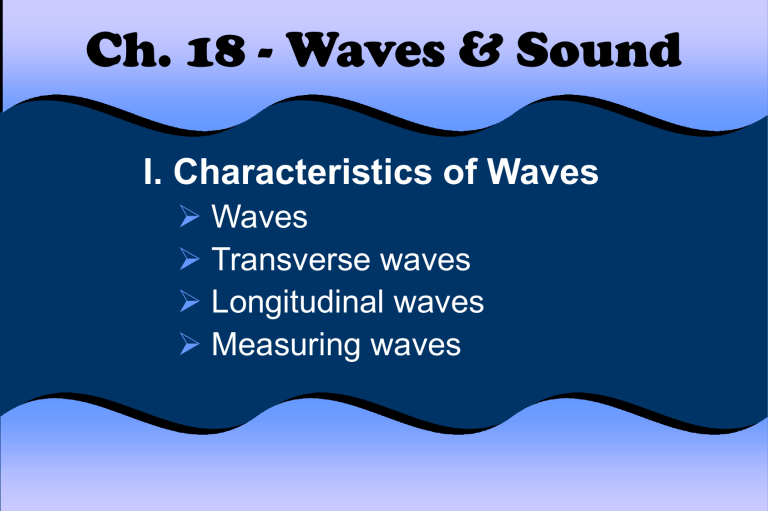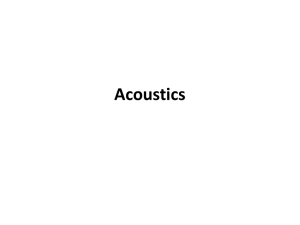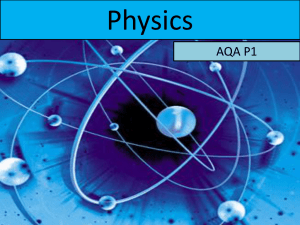I Characteristics of Waves
advertisement

Ch. 18 - Waves & Sound I. Characteristics of Waves Waves Transverse waves Longitudinal waves Measuring waves A. Waves Waves rhythmic disturbances that carry energy through matter or space Medium material through which a wave transfers energy solid, liquid, gas, or combination electromagnetic waves don’t need a medium (e.g. visible light) A. Waves Two Types: Longitudinal Transverse B. Transverse Waves Transverse Waves medium moves perpendicular to the direction of wave motion B. Transverse Waves Wave Anatomy crests wavelength corresponds to the amount of energy carried by the wave amplitude amplitude nodes wavelength troughs C. Longitudinal Waves Longitudinal Waves (a.k.a. compressional) medium moves in the same direction as wave motion C. Longitudinal Waves Wave Anatomy compression rarefaction wavelength wavelength Amount of compression corresponds to amount of energy AMPLITUDE. D. Measuring Waves Frequency ( f ) # of waves passing a point in 1 second Hertz (Hz) shorter wavelength higher frequency higher energy 1 second D. Measuring Waves Velocity ( v ) speed of a wave as it moves forward depends on wave type and medium v=×f v: velocity (m/s) : wavelength (m) f: frequency (Hz) D. Measuring Waves EX: Find the velocity of a wave in a wave pool if its wavelength is 3.2 m and its frequency is 0.60 Hz. WORK: v=×f GIVEN: v=? = 3.2 m f = 0.60 Hz v = (3.2 m)(0.60 Hz) v v = 1.92 m/s f D. Measuring Waves EX: An earthquake produces a wave that has a wavelength of 417 m and travels at 5000 m/s. What is its frequency? WORK: f=v÷ GIVEN: = 417 m v = 5000 m/s f=? v f = (5000 m/s) ÷ (417 m) f = 12 Hz f






